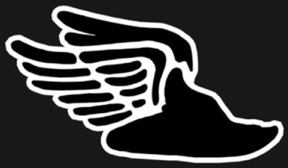With the Ironman 70.3 Philippines in a few months, excited
first time triathletes prepare for their biggest race this year.
Swim training is the most difficult for many. Not many of us
swam when we were younger and some just learned how to swim. The first thing we
need to start our swim training is to get a swim coach. We will also need basic
swim equipment to help us practice better. A good pair of training or pool
goggles and open water or race goggles are a necessity. Swim trunks or tri
shorts and swim caps are required for most swimming pools and a few swimmers
invest in pool buoys, paddles or kick boards to enhance their training.
Runners need only a good pair of running shoes. Although
local running stores can easily help you with the right pair, many still resort
to trial and error.
Cycling, on the other hand, is the most complicated. Finding
the right gear is a challenge as even professional cyclists experiment on their
equipment. I learned to bike when I was in high school and never realized it
was this complicated.
For those joining the Ironman, road or tri bikes are
required. I have searched online for the most comprehensive bike measurements
needed prior to buying your first bike and became more confused since most
recommendations are just estimates.
Body measurements are needed to arrive at the right
estimate.
1. Inseam/ Inside Leg Length. These are taken with your back
against the wall and standing barefoot. Measure from the floor up to the part
where your measuring tape touches your crotch.
2. Trunk Length. From the top of your inseam, measure to the
top of your sternum at the point where both clavicles meet in the middle of your chest.
3. Arm Length. This is measured from the hand (clenched
fist) holding a round object to your shoulder joint (bony protrusion above the
shoulders).
Bike measurements or geometry estimates from the body
measurements taken.
1. Frame Size. Usually provided by manufacturers measured
from center of bottom bracket to either center of top tube or top of seat tube.
Estimated from Inseam x 0.65.
2. Top Tube Length. Measured using traditional (non-sloping)
frames. Sloping frames are provided with effective top tube measurements by
manufacturers. Estimated from trunk length + 2-3cm.
3. Saddle Height. Measured from center of bottom bracket to
top of central part of saddle. Estimated from Inseam x 0.885.
4. Crank Length. Normally 170mm but may vary depending on
rider height and riding style. Recent data suggest using shorter cranks for Time trials or Triathlon events.
5. Handlebar Measurements. Width usually 42cm depending on
shoulder width and riding style. Sprinters use wider bars while Climbers use
narrow bars. Drop, reach and shape of handlebars depend on rider preference and
style.
6. Head Stem Length. Depending on riding style, stem length
range from 60mm to 140mm or longer. Estimated from Arm length x 0.203. A rough
guide is to look at the front hubs while riding on the drops or hoods
(conflicting data regarding exact riding location). The handlebars should
occlude the front hubs while assuming this position.
These are just basic measurement estimates that cyclist need
to consider prior to purchasing or experimenting with new equipment. Many factors need to be considered when
experimenting with bike settings like comfort and riding style. Aggressive
riders prefer to be more aerodynamic while some riders prefer to be more
comfortable during their rides. Materials used for each equipment are
significant for the weight-conscious cyclist. Carbon and titanium parts are
lighter and more expensive than aluminum or steel parts. These do not
necessarily relate to better performance.
Recently, I made small changes to my road bike setup which
made very significant changes in performance. I changed my stem from 110mm to
120mm with a -6 degree rise and noticed major improvements. I always train with
a heart monitor to check performance and noted that my heart rate was lower by
at least 5-10 percent immediately after changing stems. These findings are
consistent as I regularly check my training log for heart rate changes on the
same course and intensity.
These are my exact road bike specifications.
Frame: Scott Speedster S20 aluminum with Scott carbon forks
(Size: Medium/ TT: 54.5)
Stem: FSA OS150 120mm +/- 6 degrees
Handlebars: Scott Road Anatomic 42mm
Drivetrain: Shimano Ultegra
Cassette: Shimano Ultegra 11-25
Crankset: Shimano Ultegra 53/39 170mm cranks
Brakes: Shimano Ultegra
Pedals: Speedplay Zero Chromoly
Saddle: Fi’zi:k Arione Versus
Seatpost: Scott carbon/ alloy
Wheelset: Fulcrum Racing 7
Tires: Vredestein Fortezza TriComp 700x23
Bottle Cage: Lezyne cages
Computer: Cateye Strada Wireless
Cadence sensor: Garmin
Time Trial or Triathlon Bikes are a bit more complicated. No exact recommendations are published. Mountain bikes also have different recommendations.
(click to enlarge)























Nice Scott bike Reel! And thanks for posting all these helpful tips here. Btw, just one comment, the practice of going 2.5mm longer for time-trials has now been replaced by an opposite trend with good results, most time trialers and triathletes now use short cranks. Craig Alexander used 165mm cranks in Kona and he's like 5'9. Lance now uses 170mm cranks after spending a lifetime on 175mm, I use 165mm while current Cobra Champ Arland Macasieb uses 145mm.
ReplyDeleteThanks Coach! Yup, the research now are leaning towards shorter cranks. I plan to get 165mm cranks for TT also when I go back racing triathlon. My Aubrey TT bike is equipped with 175 cranks and it rides differently. Can't spin as fast.
ReplyDeleteI think my reference for this article is outdated. hahaha.